Biological specificity of CDK4/6 inhibitors: dose response relationship, in vivo signaling, and composite response signature
- PMID: 28620137
- PMCID: PMC5546433
- DOI: 10.18632/oncotarget.18435
Biological specificity of CDK4/6 inhibitors: dose response relationship, in vivo signaling, and composite response signature
Abstract
Recently developed potent and selective CDK4/6 inhibitors fall into two classes based on structure and toxicity profiles in clinical studies. One class, exemplified by palbociclib and ribociclib, exhibits neutropenia as a dose-limiting toxicity and requires discontinuous dosing. In contrast, the structurally distinct CDK4/6 inhibitor abemaciclib is dosed continuously, and has diarrhea and fatigue as dose-limiting toxicities. In preclinical models, palbociclib has been extensively studied and induces cell cycle inhibition in an RB-dependent manner. Thus far, abemaciclib has been less extensively evaluated. We found that abemaciclib cell cycle inhibitory activity is RB-dependent at clinically achievable concentrations. Abemaciclib elicited potent suppression of RB/E2F regulated genes associated with prognosis in ER-positive breast cancer. However, unlike palbociclib, at 250nM-1 µM doses abemaciclib induced cell death in RB-deficient cell lines. This response was associated with a rapidly-induced multi-vacuolar phenotype indicative of lysosomal membrane permeabilization that could be ameliorated with chloroquine. This event was not a reflection of inhibition of other CDK family members, but could be recapitulated with CBX4945 that inhibits casein and DYRK/HIPK kinases. To determine if these "off-target" features of abemaciclib were observed in vivo, mice harboring matched RB-positive and negative xenografts were treated with palbociclib and abemaciclib. In vivo, all of the apparent activity of abemaciclib was RB-dependent and strongly elicited suppression of cell cycle regulatory genes in a fashion markedly similar to palbociclib. Using gene expression data from cell lines and tumors treated with abemaciclib and palbociclib a composite signature of response to CDK4/6 inhibition was developed that included many genes that are individually required for tumor cell proliferation or viability. These data indicate that while abemaciclib and palbociclib can exert distinct biological and molecular effects, there are common gene expression features that could be broadly utilized in measuring the response to CDK4/6 inhibition.
Keywords: CDK4; E2F; abemaciclib; breast cancer; palbociclib.
Conflict of interest statement
This study was supported, in part, by sponsored research funding from Eli Lilly. The work was carried out independently in an academic setting and reflects the data and interpretations of the authors.
Figures
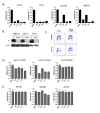

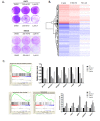

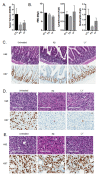
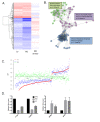
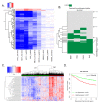
Similar articles
-
Clinical Management of Potential Toxicities and Drug Interactions Related to Cyclin-Dependent Kinase 4/6 Inhibitors in Breast Cancer: Practical Considerations and Recommendations.Oncologist. 2017 Sep;22(9):1039-1048. doi: 10.1634/theoncologist.2017-0142. Epub 2017 Jul 13. Oncologist. 2017. PMID: 28706010 Free PMC article. Review.
-
Brain Exposure of Two Selective Dual CDK4 and CDK6 Inhibitors and the Antitumor Activity of CDK4 and CDK6 Inhibition in Combination with Temozolomide in an Intracranial Glioblastoma Xenograft.Drug Metab Dispos. 2015 Sep;43(9):1360-71. doi: 10.1124/dmd.114.062745. Epub 2015 Jul 6. Drug Metab Dispos. 2015. PMID: 26149830
-
Cyclin-dependent kinase 4/6 inhibitors in breast cancer: palbociclib, ribociclib, and abemaciclib.Breast Cancer Res Treat. 2017 Nov;166(1):41-54. doi: 10.1007/s10549-017-4385-3. Epub 2017 Jul 24. Breast Cancer Res Treat. 2017. PMID: 28741274 Review.
-
Cyclin-dependent kinase 4/6 inhibitors for the management of advanced or metastatic breast cancer in women.Am J Health Syst Pharm. 2019 Aug 1;76(16):1183-1202. doi: 10.1093/ajhp/zxz121. Am J Health Syst Pharm. 2019. PMID: 31369120 Review.
-
Investigation of ribociclib, abemaciclib and palbociclib resistance in ER+ breast cancer cells reveal potential therapeutic opportunities`.Sci Rep. 2025 Aug 5;15(1):28579. doi: 10.1038/s41598-025-11052-4. Sci Rep. 2025. PMID: 40764324 Free PMC article.
Cited by
-
Palmitoylation prevents B7-H4 lysosomal degradation sustaining tumor immune evasion.Nat Commun. 2025 May 8;16(1):4254. doi: 10.1038/s41467-025-58552-5. Nat Commun. 2025. PMID: 40341398 Free PMC article.
-
Modeling breast cancer proliferation, drug synergies, and alternating therapies.iScience. 2023 Apr 23;26(5):106714. doi: 10.1016/j.isci.2023.106714. eCollection 2023 May 19. iScience. 2023. PMID: 37234088 Free PMC article.
-
Targeting CDK4 and CDK6 in cancer.Nat Rev Cancer. 2022 Jun;22(6):356-372. doi: 10.1038/s41568-022-00456-3. Epub 2022 Mar 18. Nat Rev Cancer. 2022. PMID: 35304604 Free PMC article. Review.
-
CDK4/6 blockade provides an alternative approach for treatment of mismatch-repair deficient tumors.Oncoimmunology. 2022 Jul 11;11(1):2094583. doi: 10.1080/2162402X.2022.2094583. eCollection 2022. Oncoimmunology. 2022. PMID: 35845723 Free PMC article.
-
In vitro to Clinical Translation of Combinatorial Effects of Doxorubicin and Abemaciclib in Rb-Positive Triple Negative Breast Cancer: A Systems-Based Pharmacokinetic/Pharmacodynamic Modeling Approach.Breast Cancer (Dove Med Press). 2021 Feb 18;13:87-105. doi: 10.2147/BCTT.S292161. eCollection 2021. Breast Cancer (Dove Med Press). 2021. PMID: 33628047 Free PMC article.
References
-
- Sherr CJ, Beach D, Shapiro GI. Targeting CDK4 and CDK6: From Discovery to Therapy. Cancer Discov. 2016;6:353–67. doi: 10.1158/2159-8290.CD-15-0894. - DOI - PMC - PubMed
MeSH terms
Substances
Grants and funding
LinkOut - more resources
Full Text Sources
Other Literature Sources

